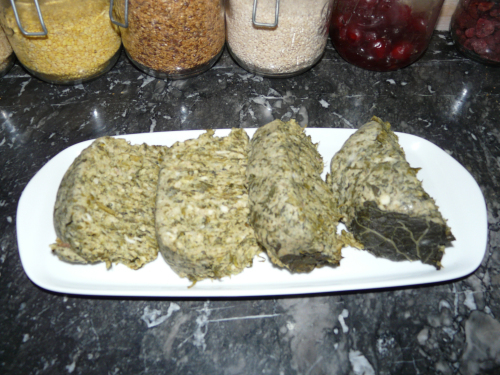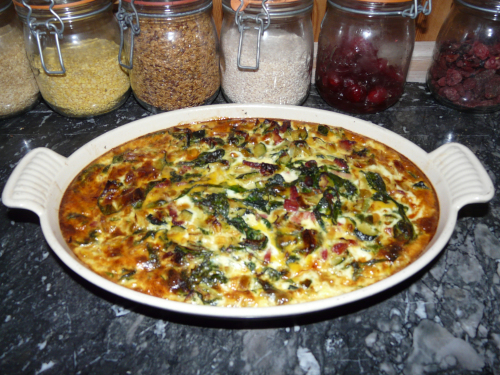French Food Facts 1: – Farci Poitevin.

One of the things that confounds the British shopper in France is the
bewildering array of unusual ingredients that they come across in French
shops and markets.
I think we can all navigate our way around the familiar: Fruit and
vegetables, bread and most dairy staples pose no problem. We may not
recognise the sea of cheeses that confronts us at the counter, but we
have an idea of its tastes and textures due to the ever increasing offer
of French cheeses in UK supermarkets these days.
Meat too is familiar territory, although we may struggle as cuts are
quite different to what we are used to.
However, there are exciting things to try that we just don’t recognise,
and very often we simply avoid them, in order to play safe.
In this series of posts I will attempt to demystify some of these
ingredients and offer some suggestions as to how to use them, be it on
their own or as part of a meal or recipe.
So, let’s get started with Farci Poitevin
You may have spied this delicacy on the charcuterie counter, sitting
next to the vast tubs of paté that the French (and us for that matter)
love so much.
Its roots are well entrenched in the peasant cooking traditions of the
Poitou Charentes, and is a steamed pudding consisting of seasonal greens
and pork fat with possibly some ham. Eggs and flour are added to bind
the whole thing together,large cabbage leaves would be used to encase
the mixture into a greased muslin cloth and steamed for up to four hours
– not unlike our Christmas puddings at home.
The ingredients in past time would have been available year round
(greens of some description are a year round feature in the French
potager) and pork fat, ham scraps and eggs would have been staple larder
items for families who worked the land.
In the shops, it appears today in huge earthenware pots, and you can buy
a slice, just like paté. It is served hot or cold as a starter, and
sometimes it is breaded and fried as a more rib-sticking dish in colder
months.
As it is a time consuming dish to prepare, most traditional recipes call
for large quantities as which can serve up anything from 12-20 people.
Here is a lighter version that can be prepared and on the table in an
hour. It uses seasonal greens, so feel free to use your own
combinations. Try and use fresh herbs as it gives the dish a fresher
taste to its denser counterpart, pictured above.
INGREDIENTS
800g green veg – I used leeks, spinach, and courgettes
400g lardons (not smoked – diced bacon can also be used)
6 eggs
500 ml milk
small bunch of parsley and dill
salt and pepper
knob butter
olive oil
METHOD
1.Finely chop leeks, courgettes, spinach and fresh herbs.
2.In a frying pan, heat a small amount of olive oil and gently brown
lardons and drain away excess fat.
3. Add knob of butter and olive oil to another frying pan and gently fry
leeks for 5 mins.
5.Add courgettes and fry for a further 5 minutes.
6. Add spinach and cook until leaves wilt down.
7. Add fresh herbs to pan and remove from heat.
8. In an oven proof dish add lardons and greens from the two pans,
seasoning and stir to mix.
9. Beat together the milk and the eggs and pour over the mixture.
10 Cook on the centre shelf in an oven preheated to 180 degrees c. for
30-40 mins until browned and set.
